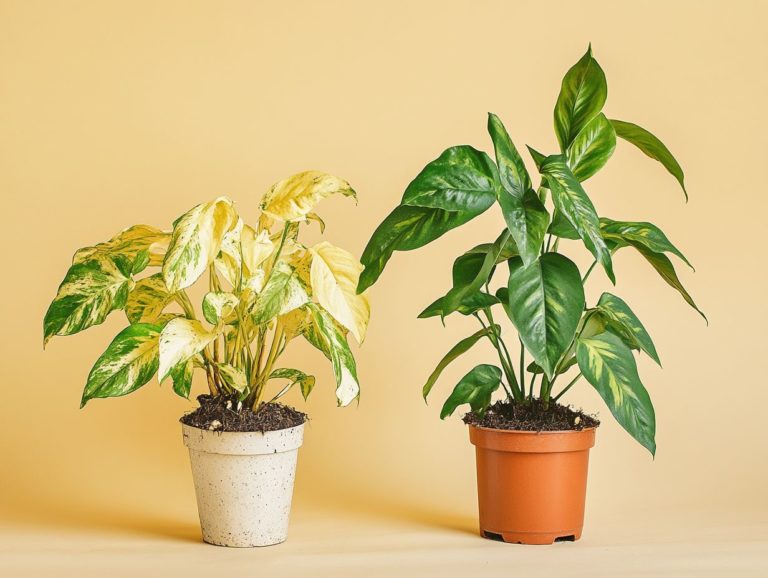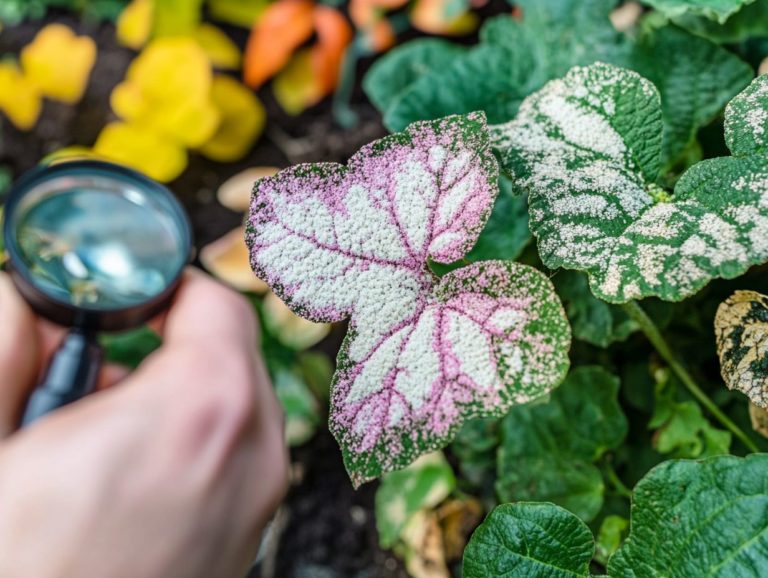Signs You Have a Bacterial Infection in Plants
Bacterial infections in plants can cause significant challenges for any gardener, quietly damaging your beloved greenery.
Understanding these infections is crucial. Recognizing their signs and knowing how to diagnose and treat them will help maintain your garden.
This guide will walk you through the visual symptoms associated with bacterial infections and provide you with effective prevention strategies.
Equip yourself with the knowledge to keep your plants thriving and safeguard your garden from these hidden threats.
Contents
- Key Takeaways:
- Understanding Bacterial Infections in Plants
- Common Signs of Bacterial Infections in Plants
- Diagnosing Bacterial Infections in Plants
- Treating Bacterial Infections in Plants
- Preventing Bacterial Infections in Plants
- Frequently Asked Questions
- What are some signs that my plants may have a bacterial infection?
- Can a bacterial infection spread to other plants in my garden?
- Are there any preventative measures I can take to avoid bacterial infections in my plants?
- How can I confirm if my plants have a bacterial infection?
- What should I do if my plants have a bacterial infection?
- Can I still eat the fruits or vegetables from plants with a bacterial infection?
Key Takeaways:
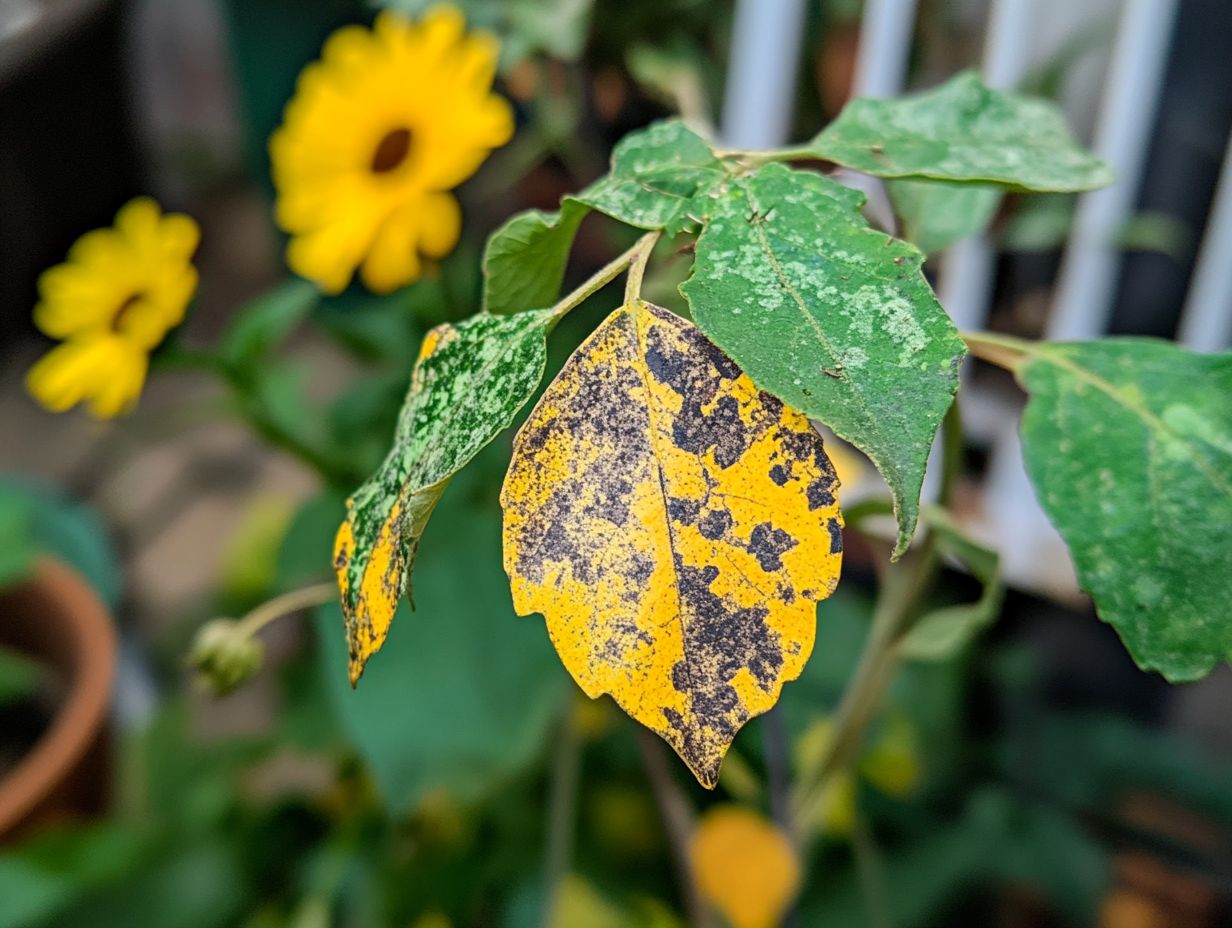
- Visual symptoms such as spots, wilting, and discoloration are common signs of bacterial infections in plants.
- Bacterial infections can have a harmful effect on the growth and overall health of plants, leading to stunted growth and reduced yields.
- Early diagnosis and proper treatment are key in managing bacterial infections in plants, and preventative measures can help avoid these infections altogether.
Understanding Bacterial Infections in Plants
Understanding bacterial infections in plants is essential for effective disease management and prevention. These infections, caused by various bacteria, can profoundly affect agriculture, resulting in issues like bacterial wilt, soft rot, and bacterial blight.
Factors such as moisture and the presence of pathogens play significant roles in disease development and transmission. Therefore, it s essential for you, as a farmer or agricultural expert, to identify the infectious agents and understand their impact on crop health.
Institutions like the University of Missouri and the University of Florida offer invaluable insights into recognizing and managing these bacterial diseases effectively.
What are Bacterial Infections?
Bacterial infections in plants arise when pathogenic bacteria invade the tissues, leading to a range of disease symptoms that can significantly compromise plant health.
These infections stem from specific types of bacteria, such as Xanthomonas, Pseudomonas, and Erwinia, each associated with distinct plant diseases. Unlike fungal infections, which typically manifest as rot or mold, bacterial infections show distinct signs like necrosis, the death of plant tissue, and wilting, often caused by the bacteria disrupting the plant’s water transport system.
Recognizing these symptoms early is crucial, as they can significantly affect crop yield and quality, allowing you to differentiate bacterial pathogens from other microbes that also contribute to plant diseases. Act quickly!
Common Signs of Bacterial Infections in Plants
Identifying common signs of bacterial infections in plants is vital for early diagnosis and effective disease management. You might notice symptoms like vascular wilt, bacterial blight, and bacterial canker, which can present in various ways, such as wilting leaves, yellowing, and necrosis.
Recognizing these indicators allows for timely intervention, preventing the further spread of disease in crops like tomatoes, corn, and cucurbits. Effective monitoring strategies can help you spot these bacterial diseases. Check out resources like PennState Extension for strategies to spot these diseases early.
Visual Symptoms

Visual symptoms of bacterial diseases can vary widely, often presenting as yellowing leaves, wilting, and soft rot that may escalate to necrosis in severe cases.
Take carrots, for example; bacteria may lead to crown rot, which appears as a dark, watery decay around the base. Sweet corn, on the other hand, might showcase elongated streaks or lesions on the leaves, giving them a scorched look.
It’s essential to differentiate bacterial infections from fungal diseases. Bacterial infections typically result in a w watery, oozy consistency, while fungal manifestations tend to show more defined, dry lesions. By carefully observing the texture and moisture levels of the affected areas, you can gain valuable insights into the nature of the infection, which will help you devise effective management strategies.
Effects on Growth and Health
Bacterial infections can significantly hinder your plants’ growth and overall health, ultimately leading to reduced yields and compromised crop quality.
When harmful bacteria invade, how the plant works might suffer, resulting in stunted growth and a lack of vitality. Weak plants are less resilient, making them more susceptible to secondary infections and other diseases.
To address these challenges, it s crucial to implement effective disease control strategies. Utilizing biological control agents and maintaining proper sanitation practices are essential steps. Investing in resistant plant varieties can greatly help mitigate the effects of these bacterial threats, ensuring healthier crops and improved agricultural outcomes, even in the face of adversity.
Diagnosing Bacterial Infections in Plants
Diagnosing bacterial infections in plants demands an array of sophisticated tools and techniques to pinpoint the specific pathogens responsible for the ailment. Each approach plays a crucial role in ensuring accurate identification, allowing for effective management and treatment of the disease.
Tools and Techniques for Identification
Tools and techniques for diagnosing bacterial diseases at your disposal include visual assessments, culture methods, and molecular techniques like PCR (Polymerase Chain Reaction), a method used to amplify DNA sequences. Each of these methods plays a vital role in identifying specific pathogens.
Visual assessments help you spot symptoms such as wilting or discoloration, giving you a quick, albeit sometimes vague, overview of the situation. Culture methods allow for the growth and observation of bacteria, but they can be time-consuming and may not always provide definitive results. On the other hand, molecular techniques like PCR offer high sensitivity and specificity, enabling the detection of even the smallest amounts of genetic material from pathogens. However, these methods often require sophisticated equipment and a certain level of expertise.
To prevent bacterial diseases, consider obtaining pathogen-free plants through certified nurseries or tissue culture. This method gives your plants the best chance to thrive!
Treating Bacterial Infections in Plants
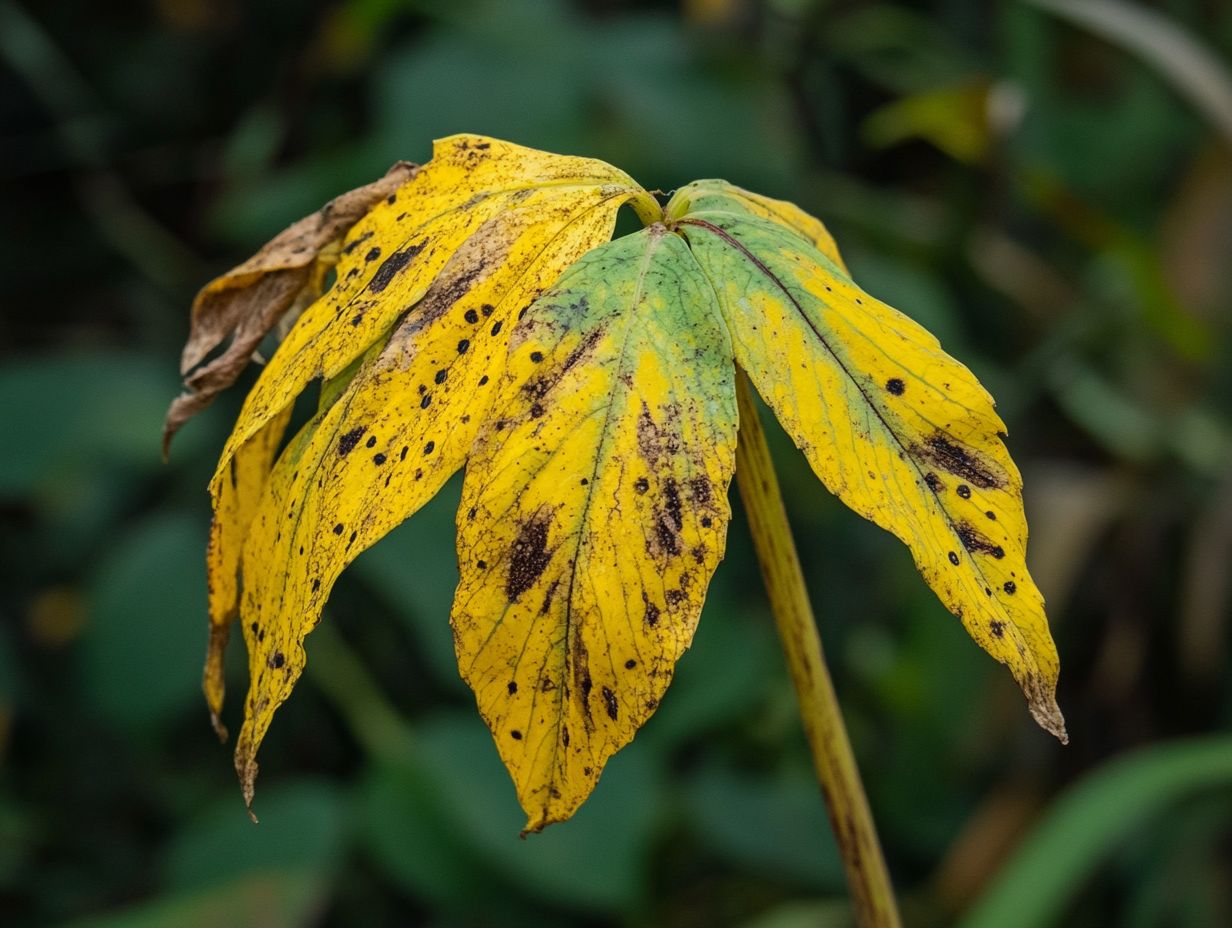
Treating bacterial infections in plants must implement powerful disease management strategies now! By doing so, you can significantly reduce the impact of these infections on your crops, ensuring their health and productivity.
Effective Treatment Methods
Effective treatment methods for bacterial infections involve utilizing antibiotics in severe cases, introducing resistant varieties, and implementing cultural practices that enhance plant health.
Among these approaches, antibiotics are essential for tackling acute infections, especially when rapid results are imperative. However, it’s important to note that their effectiveness can wane with overuse, which may lead to resistance.
Conversely, adopting resistant crop varieties significantly contributes to long-term disease management by reducing dependency on chemical treatments and curbing the spread of infections.
In addition, cultural practices such as crop rotation and sanitation measures further bolster resilience by fostering a balanced ecosystem.
Therefore, while antibiotics offer immediate relief, integrating resistant varieties and robust cultural practices can pave the way for more sustainable solutions in bacterial disease control.
Preventing Bacterial Infections in Plants
Preventing bacterial infections in plants is essential for ensuring your crops thrive. This requires a thoughtful approach that incorporates best practices specifically designed to suit the unique environmental conditions of your growing area.
By paying attention to these factors, you can cultivate a robust and healthy yield.
Best Practices for Prevention
To prevent bacterial infections effectively, embrace best practices. These include crop rotation and selecting resistant varieties.
Ensure your plants are pathogen-free by obtaining them from reputable sources like the University of Florida or University of Nebraska.
These strategies are essential for maintaining the overall health of your crops while minimizing the risk of disease outbreaks. Crop rotation disrupts bacterial life cycles by varying the types of plants grown in a specific area, significantly reducing the likelihood of bacteria buildup in the soil.
Opting for resistant varieties, carefully developed through research, equips your plants with the innate ability to fend off particular bacterial strains. Implementing proper management practices is also crucial. Conducting soil tests and maintaining sanitation measures, such as disinfecting tools and equipment, can greatly reduce the initial introduction of pathogens, thereby safeguarding plant health and ensuring robust yields over time.
Frequently Asked Questions
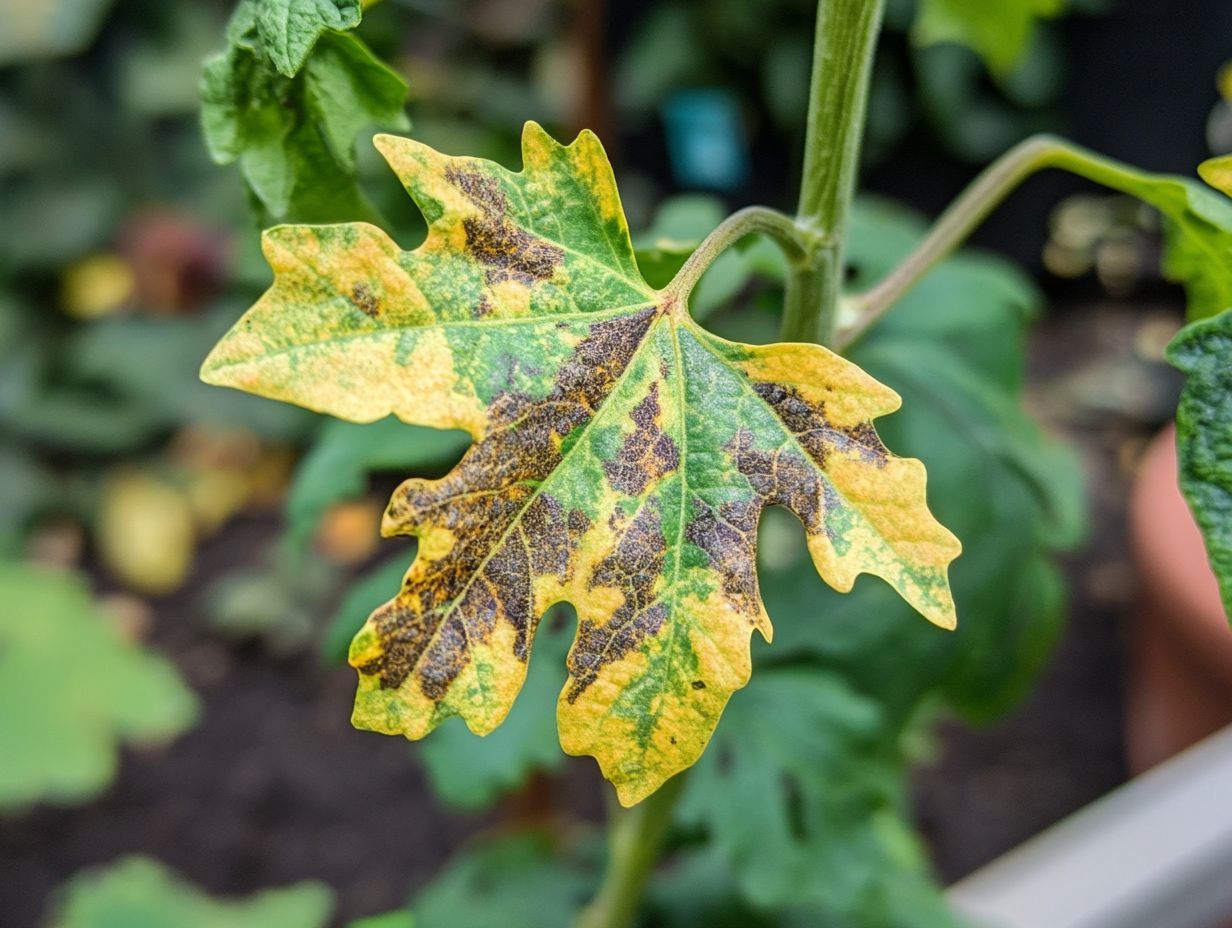
What are some signs that my plants may have a bacterial infection?
Some common signs of a bacterial infection in plants include wilting, yellowing or browning of leaves, stunted growth, and the presence of lesions or spots on the leaves.
Can a bacterial infection spread to other plants in my garden?
Yes, bacterial infections can easily spread to other plants through contaminated soil, tools, or by insects that carry the bacteria on their bodies.
Are there any preventative measures I can take to avoid bacterial infections in my plants?
Yes, you can prevent bacterial infections in your plants by maintaining good hygiene practices, such as regularly cleaning your gardening tools and avoiding overwatering your plants.
How can I confirm if my plants have a bacterial infection?
You can send a sample of the infected plant to a local plant clinic or laboratory for testing and diagnosis. They will be able to identify the specific bacteria causing the infection.
What should I do if my plants have a bacterial infection?
If your plants are infected with bacteria, it is best to remove and dispose of the infected plant and any surrounding soil. You can also treat the remaining plants with antibiotics or natural remedies, depending on the severity of the infection.
Can I still eat the fruits or vegetables from plants with a bacterial infection?
Avoid eating fruits or vegetables from infected plants to stay safe! The bacteria could potentially make you sick, so it is better to err on the side of caution and dispose of the infected plant.

